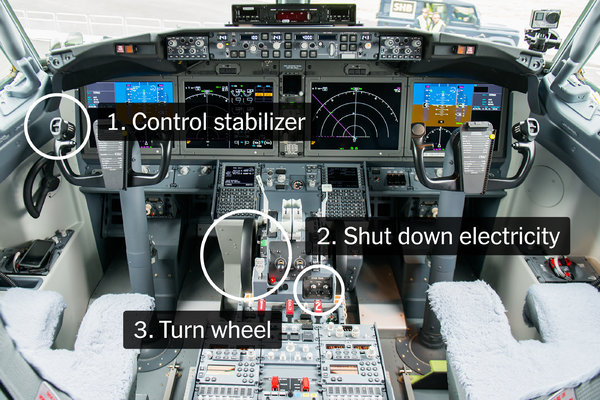New Boeing System Proved Fatally Flawed
Both the pilot and co-pilot tried time after time to pull the Boeing 737 back up to level flight. However, the automatic M.C.A.S system kept reengaging and finally sent the Indonesian Lions Air Flight 610 into the ocean 3,ooo feet below, killing all 189 people onboard.
Now authorities have found the Black Boxes from Flight 610, which tells of heroic but futile attempts to save the plane. The details of the black box data and the info they contained were publicized and analyzed in a blog post by Peter Lemme, a former Boeing engineer.

What the Lion Air Pilots May Have Needed to Do to Avoid a Crash The rapid series of steps that may have been needed to save the plane were not in the manual, and the pilots had not been trained on them. Nov. 16, 2018
Lemme found a difference between the older and the newer version of this particular aircraft. The new versions have the automatic stabilizer that kept pulling the plane down. It was tragically avoidable by changing two switches. The pilots of the doomed plane evidently did not realize what they were doing wrong when it was exactly how they had been trained.
The article found in the Nytimes.com was written by James Glanz, Muktita Suhartono and Hannah Beech. In the article, they reference Lemme’s statements about the new system that some pilots lacked familiarity.
According to Peter Lemme, the satellite communications expert and former Boeing engineer from the blog cited in the article, different pilots on the same plane from its last flight were able to cut electrical to the stabilizers and manually control them via the wheels by their ankles. Perhaps Boeing’s instructions for this situation were communicated, but the pilots on the fatal flight may not have had enough experience to execute this maneuver. Wrestling with a plane gone awry for 11 minutes is a long time.
IF the MCAS system was at fault and the pilots were unaware of how to bypass it and manually trim the aircraft ( a chore that would increase their workload and would warrant a return to base), then investigators will need to determine why Boeing thought this system would be working in the background and the pilots would not be aware of it.
The MCAS system was installed to reduce pilot trim inputs due to the changes that were made in the MAX 737. Larger more fuel-efficient engines installed further forward and higher off the ground, extended height nose landing gear assembly gained fuel savings but the new engines nacelle shape caused an increased nose up pitch under certain conditions of weight and balance, airspeed and angle of attack. MCAS handled that without pilot input.
It’s one more step away from “seat of the pants” flying. Since the advent of hydraulic or electro servo control systems, this has become more and more entrenched, and the price we pay for larger and more efficient aircraft. Boeing, for all intents and purposes, invented the aircraft cockpit checklist and pushed hard for cockpit resource management procedures for flight crews. and made huge advances in safety. This disaster shows that all angles must be explored before introducing new, potentially dangerous technology that has pitfalls.
read more at nytimes.com








Leave A Comment